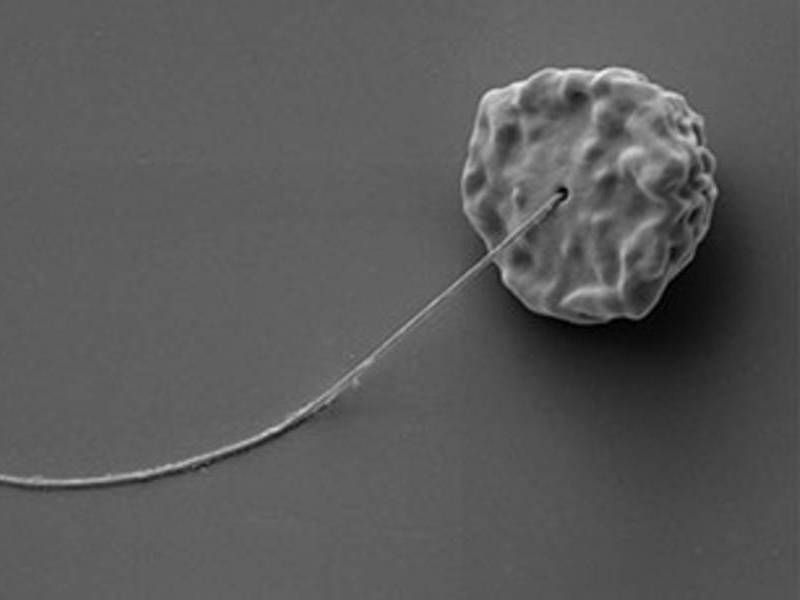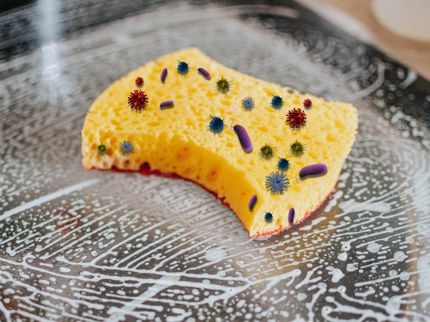Like a swimming donut
New way of locomotion discovered in single-celled organisms
Advertisement
A research team led by Dr. Sebastian Hess at the University of Cologne discovered that the unicellular microbe Idionectes vortex moves by means of a rotating flagellum. Special about this discovery is the fact that the flagellum bends into a ring and rotates about its internal axis – enabling Idionectes to swim with a motion similar to a smoke ring travelling through air. In case of the new microbe, the spinning motion of the flagellum produces a cycling film of water, which propels the organism forward.

Universität zu Köln
‘In addition to the previously unknown mode of locomotion, we have also found unusual structural details of the new species,’ says Dr. Sebastian Hess from the Institute of Zoology at the University of Cologne and lead author of the current study. ‘The base of the flagellum lacks visible anchoring fibres and, instead, sits in a structure resembling a bearing bushing, which might allow rotation in the first place.’ Rotating flagella, however, are a trait of prokaryotes, cells without a nucleus, not of the structurally much more complex eukaryotes such as Idionectes vortex. The new microbe thus represents a very interesting cell biological exception. In future, Sebastian Hess wants to find out more about the cellular details of Idionectes vortex to understand how this unique mode of locomotion evolved.

















































